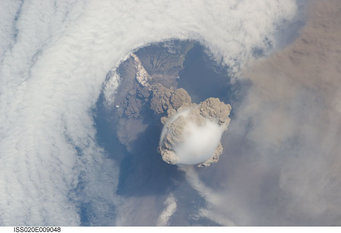Interdisciplinary Environmental History: How Narratives of the Past can meet the Challenges of the Anthropocene
A new paper in the journal Annales discusses vital methodological issues for humanities-based historical inquiry and argues that the challenges of the Anthropocene demand interdisciplinary research informed by a variety of historical narratives
The stories historians tell about society and climate typically take one of two forms: stories in which societies experience catastrophic collapse due to climate change and stories in which societies show resilience, riding out climatic disasters due to the durability of the system’s structures.
Now, a new article discusses the methodological challenges of collaborating between the natural science and the humanities, arguing that, to face the challenges of the Anthropocene, environmental history must move beyond the catastrophism and resilience tropes to present a plurality of stories.
Narratives of the Past
As the impacts of current climate change on agricultural systems, human settlement and biodiversity grow ever more apparent, understanding the ways that climate and societies have interacted in the past has never been more important. Unfortunately, the authors of the new paper argue, the two main tropes of climate change-history, while taking very different approaches, still present a limited picture.
Until recently, the rhetoric of discussions on climate change and history has been largely catastrophic and tragic, portraying human societies as victims of a harsh climate. These stories are intended to grab readers’ attention and motivate them to action.
The main alternative to the narrative of catastrophe are stories of resilience, which highlight societies’ perseverance in the face of past climate. These more optimistic stories emphasize human adaptation to adverse environments. Unlike stories of catastrophe which are intended to motivate radical action, stories of resilience are philosophically conservative, serving to strengthen and defend the status-quo.
“We shouldn’t reject catastrophism or resilience,” says lead author Adam Izdebski, leader of the Palaeo-Science and History research group at the Max Planck Institute for the Science of Human History, “but rather realize the strengths and weaknesses of each and invent new tropes capable of telling a socially impactful and intellectually insightful story of human-climate interactions.”
Environmental Science for Historians
To equip historians to conduct interdisciplinary research, the new article includes an in-depth introduction to paleo-environmental evidence, including how to utilize the diversity of scientific data and the key issue of approximating time and space.
Following the discussion of methodological considerations, the authors present case studies that develop historical narratives using textual sources and natural scientific evidence.
One such case study examines the so-called ‘536 event’ – the first of a series of volcanic eruptions in the sixth century argued to have had an outsized effect on the social and political history of much of the Northern Hemisphere. In the 1980s, scientists began linking evidence from ice cores and tree rings suggestive of climate variability to written records of the event and its aftermath.

One of these texts, written by the Italian government official Cassiodorus, appears to support the view that the impacts of the eruption were widespread and long lasting. Cassiodorus describes a year of unseasonable weather under a sea-green sun and recounts how state granaries had to be opened to stave off famine due to crop failures.
While this account appears to support the maximalist position, textual analysis reveals that the disasters Cassiodorus describes, and sometimes even the exact language used to describe them, can be found in earlier Roman accounts of meteorological anomalies. These allusions to earlier texts serve as a warning against taking the account at face value, and may even suggest efforts by Cassiodorus to transform unprecedented events in the lives of his contemporaries into something familiar, for which Roman literature had already provided a framework.
"We can see similar rhetorical strategies in present-day debates on climate change," says Kevin Bloomfield, the author responsible for the case study of the 536 event. "The first step is demystifying what exactly climate change is going to do. Providing comparisons to familiar phenomena from the past makes the threat seem more real, more in need of action, than a description like '3.7 degrees Celsius warming' would."
History for the Anthropocene
With the proliferation of palaeo-scientific approaches to the study of the past, ranging from human disease and migration to landscape and climate change, humanities-based history is presented with a wealth of new evidence to incorporate into the narratives constructed of the past. The new paper presents practical approaches for the integration of natural science and the humanities, and argues that the challenges of the Anthropocene require new historical narratives developed through interdisciplinary investigations of the past.
